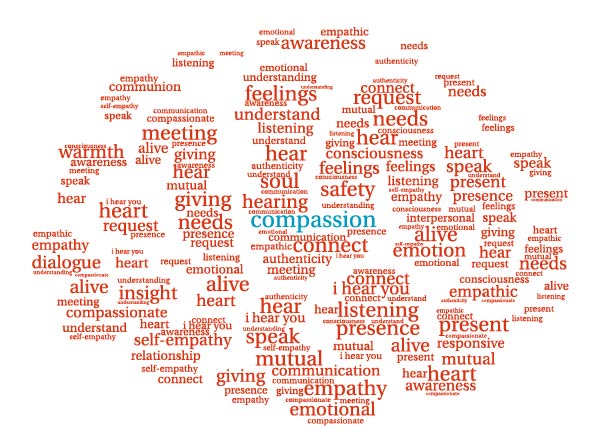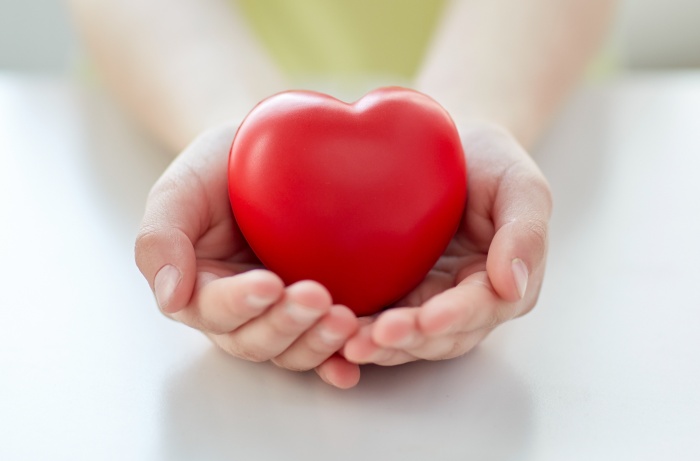 As massage therapists and bodyworkers, we listen to many heart-wrenching situations on a daily basis and are constantly being challenged to hold a compassionate and loving space for our clients.
As massage therapists and bodyworkers, we listen to many heart-wrenching situations on a daily basis and are constantly being challenged to hold a compassionate and loving space for our clients.
As we have seen throughout history, it is important to develop skills that build our compassion and know when it is appropriate to stand up against oppression and inequality. We are now being asked to make these same choices out in the world.
This has only been made more apparent to me, seeing the rise in violent acts and speech after the recent political elections in the U.S. and Europe. What we cultivate for the treatment room is needed everywhere in our lives.
 Compassion and Empathy
Compassion and Empathy
When massage clients walk through your door, they bring their lives in with them. When a client is in intense pain or has fear or worry over something going on in his life, what happens for you? Do you respond from a place of empathy or from compassion?
Compassion and empathy may be related, but have very different neurological effects.
Massage therapists who are skilled in compassion are often left with a sense of well-being after a day’s work. But when we feel empathy, we are more challenged because we are lighting up the pain center sin our brains, as noted in “Empathy for Pain Involves the Affective but not the Sensory Components of Pain,” one of many research articles by neuroscientist Tania Singer, et. al., focused on empathy and compassion. I believe this changes the way we touch and decreases our ability to be present with our clients.
With empathy, we are adding pain to pain.
Classic neuroscience has explored how to increase cognitive and motor skills, such as improving memory and gait. (Neuroscience is “the investigation of structure and function in the brain providing insights into the mechanisms of human emotions and actions,” as defined by the Fetzer Institute.)
We are now seeing a shift in research emphasis to the study and development of training programs that aim to increase higher-level mental faculties, such as attention and compassion.
Recent neuroscience research has shown a clear distinction between compassion and empathy that is highly relevant to our work.
Chris Kukk, Ph.D., a professor of political science at Western Connecticut State University and author of the upcoming book The Compassionate Achiever, clarifies the distinction between compassion and empathy.
On his website, Kukk defines compassion as “feeling kindness towards another person … and is about acquiring a 360 degree understanding of the suffering or problem that a person is experiencing and taking action to resolve it.
“Compassion is a two-step process of understanding and acting but empathy is only one step and it is about emotionally absorbing the feelings of another,” he adds.
He also explains that compassion “creates the release of the peptide hormone oxytocin, which then activates the neurotransmitters of dopamine (brain reward) and serotonin (anxiety reduction) contributing to happiness and optimism. These are the same neuronal pathways as love.”
Tania Singer, Director of Neuroscience at the Max Planck Institute for Human Cognitive and Brain Sciences in Leipzig, Germany, has used MRI scanners to show that compassion and empathy “are two different phenomena associated with different brain activity patterns.
“When we think compassionately we ‘light up’ the same regions of the brain as love but empathetic thinking lights up regions associated with pain,” she added.
Finding the Courage
We can take this information and apply it to our work. As mentioned earlier, massage therapists who are skilled in compassion are often left with a sense of well-being after a day’s work. There has been a win-win in which we have been able to understand our clients’ suffering, and have taken action to support their healing process without absorbing their upset or pain.
Again, though, when we feel empathy we are more challenged because we are lighting up the pain centers in our own brains.
When clients have life circumstances that are similar to our own, it can be difficult not to empathize. We instinctively identify with what a client is going through, and put our own emotions into the session, often without realizing it.
This reaction may feel supportive but isn’t necessarily helpful because in doing this, the session becomes more about us than it is about the client.
In some instances, a client’s situation may seem so horrifying to us that we prefer to avoid being present to escape feeling overwhelmed. This is one of the effects of empathy: We identify with the person’s situation and personalize it to ourselves. We have a hard time showing our own vulnerability and choose to stay in the safety of our own cocoon.
I saw this first hand when I invited my friend Scarlett Lewis to come and talk in my local community. Scarlett’s son, Jesse Lewis, was shot and killed in the Sandy Hook Elementary School shooting in December of 2012. Scarlett was coming to talk about her experience and discuss her support of social emotional learning, to help prevent future violence.
Many people told me, “Oh, no; I can’t meet her and hear her talk. It is too sad and depressing.” Instead, her talk had the opposite effect. Those of us who attended left feeling inspired and more connected to one another.
That experience has led me to contemplate: How do we find the courage to support each other in times of horrific tragedy? I believe the more we can come and be with the people who have been directly impacted by our worst fears, the more change we can create.
This is one way we can grow our own capacity to be open to new choices.
We Can Change
We now know—because of neuroscience—that we have neuroplasticity and that our neural pathways are always adapting. This means there is a possibility for change.
One practice that can strengthen our ability to be compassionate is to choose a loving thought over a fearful or painful one. This is possible even in some of the most tragic circumstances.
Scarlett responded in this way when faced with the death of her son Jesse. Just a few days before 5-year-old Jesse died, he wrote the words “nurturing, healing, love” on the kitchen chalkboard. These words are the definition of compassion.
After the tragedy, Scarlett’s friends and family asked her, “How can I help?” At Jesse’s memorial service she told them all to choose a loving thought over an angry one.
Even though many people empathized with the Sandy Hook families and felt anger, Scarlett challenged people to take that second step of getting into action and choosing a loving thought. Many people found that it created profound change in their lives, and it was beginning of the Jesse Lewis Choose Love Movement.
Now this movement is bringing a free social emotional program into schools, aiming to end bullying and violence in schools.
 Daily Practices
Daily Practices
There are practices we can use on a daily basis that may better support us in coming from a healthy, compassionate place, one that does not leave us feeling depleted. Meditation practices, such as Loving Kindness Practice, can be helpful.
For me personally, I have trained with Suzanne Scurlock-Durana in her “Healing From the Core” curriculum. This work enables me to be fully present and aware of how my whole body is feeling and responding as I am working.
I practice Suzanne’s guided meditation called “Ground and Fill” to help me meet my clients with compassion as opposed to empathy. The end result is that I feel fulfilled and excited about my work at the end of the day instead of depleted and burned out.
The skills I’ve learned in “Healing From the Core” work allow me to be present with clients who have experienced horrific events and to hold it all with compassion.
One particular session comes to mind with Scarlett. During a CranioSacral session, I held a grounded, supportive presence for her. In this session, she was exploring the feelings and sensations in her heart. As she felt her heart, she described feeling an intense contraction and pain from losing Jesse. It was a pain that she could not find words for but as she felt into it, she sensed that it would create disease in her heart and possibly a heart attack.
Scarlett felt like she could not release this pain, even though she wanted to because she did not want anybody else to feel it or to be harmed by it. I had my hands over the front and back of her heart, and I asked if there was anybody or anything that could support her in releasing this pain.
Although I was very aware of the intense feelings taking place for Scarlett—and my own as the mother of two children around Jesse’s age—I was able to be fully present, holding a place of compassion as she explored possibilities. She was ultimately able to find her own unique solution and let go of the pain from her heart.
For Scarlett, it was important for her to know that I was not taking on her pain and that I could also be there for her as a support to her process as she found her own action step.
Far-Reaching Effects
I’m excited that neuroscience is exploring just what compassion is, and how we can cultivate it. It is not hard to see how this field of research poses far-reaching effects in all aspects of our community, not only within health care but also in economics, education and politics, helping us create a better world.
 About the Author
About the Author
Kate Mackinnon is a diplomat certified Craniosacral Therapist through Upledger Institute International and a licensed physical therapist in both California and the United Kingdom. She is the author of From My Hands and Heart: Achieving Health and Balance with Craniosacral Therapy, with a foreword written by Wayne Dyer. She will teach a workshop, “Choose Love Over Fear: Practical Strategies to Help You Heal,” with Scarlett Lewis and Dana Liesegang at Omega in June.

 Daily Practices
Daily Practices About the Author
About the Author